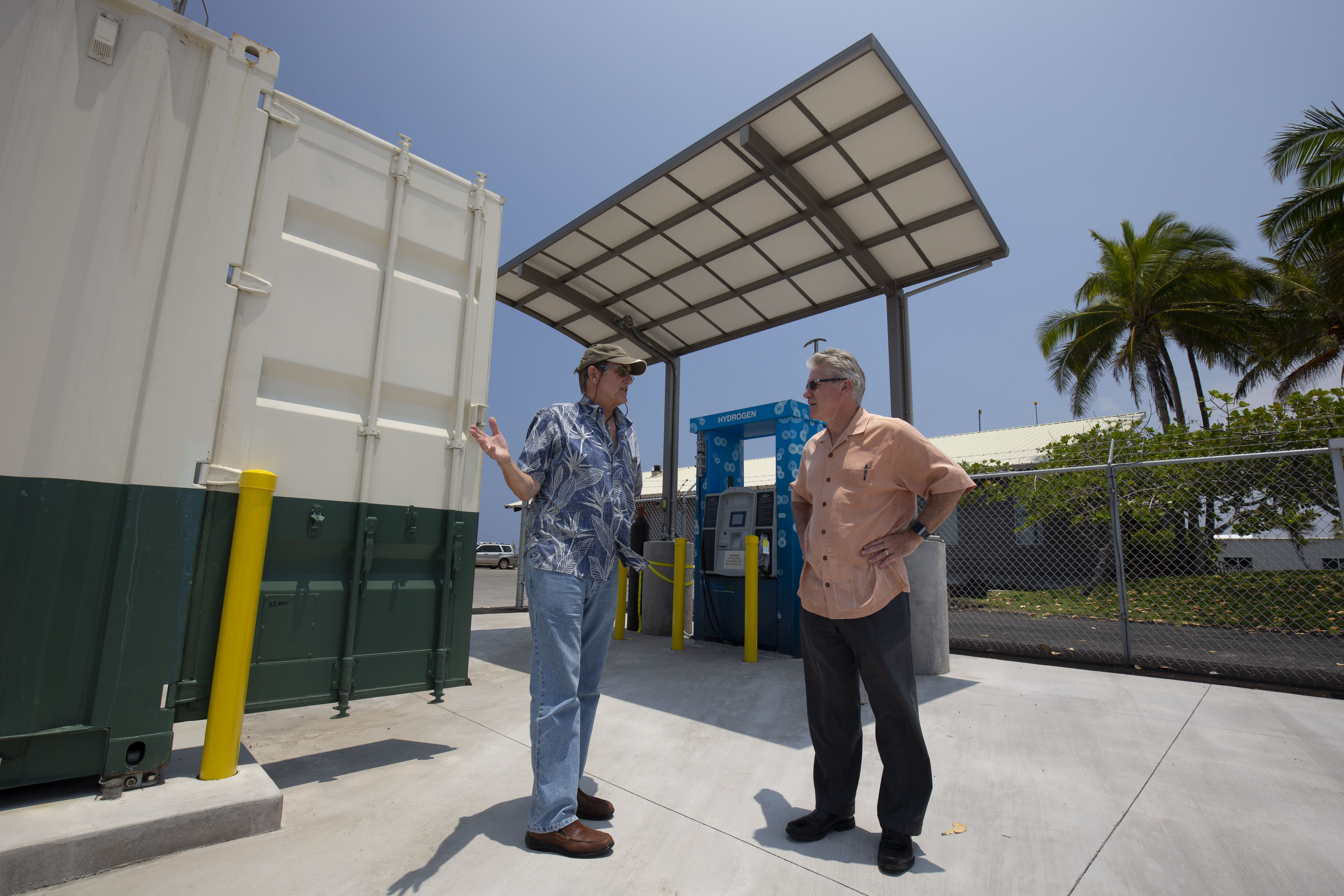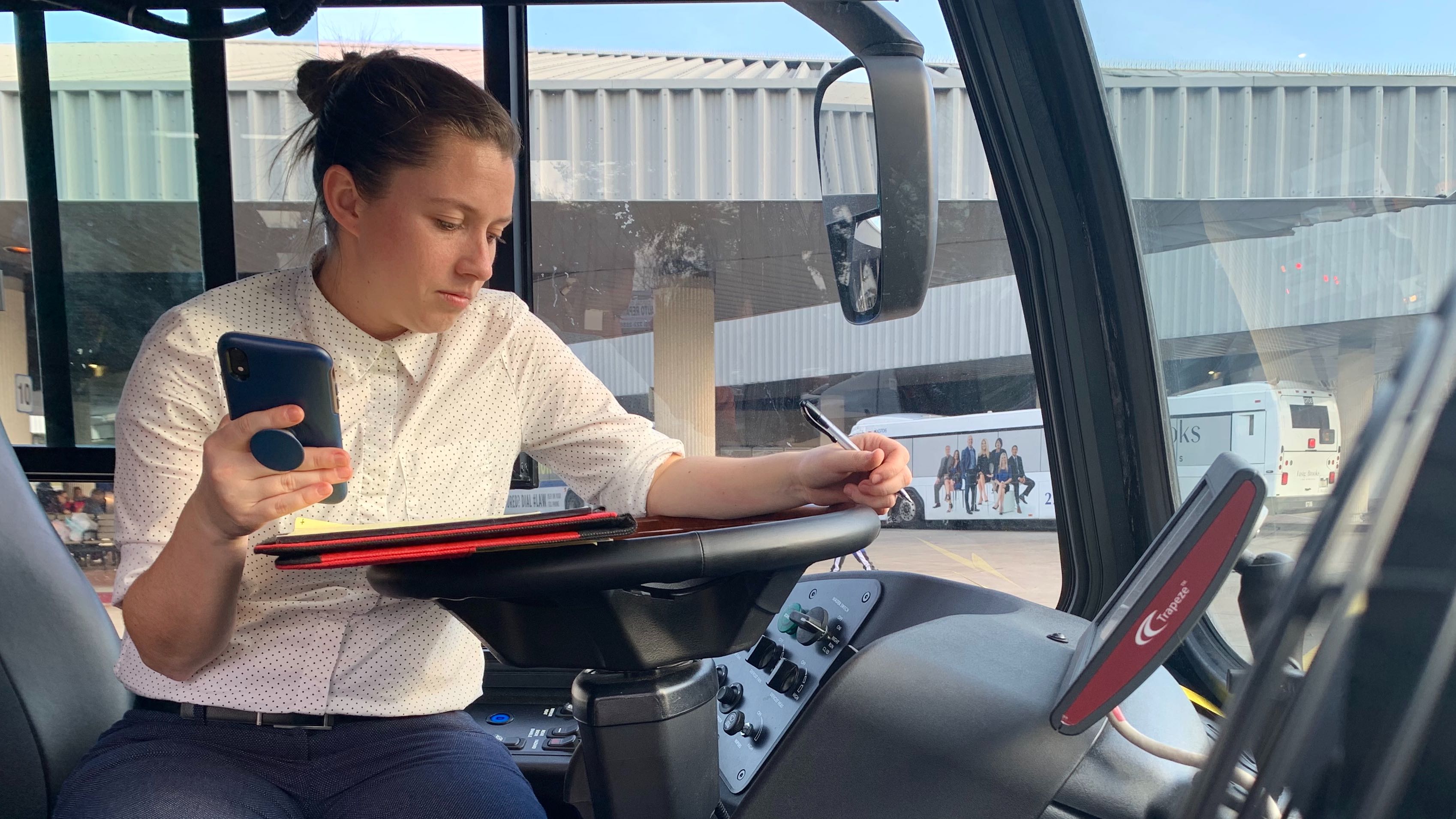Please give us some background to the Center for Transportation and the Environment (CTE).
CTE develops, promotes and implements advanced transportation technologies, vehicles and fuels that reduce environmental pollution and fossil fuel dependency by providing engineering and planning consulting services. CTE’s prototype development and demonstration projects bring technology teams together to develop clean vehicle prototypes. We match these technology teams with fleet operators who are willing to test the vehicles in the markets they are designed to serve. CTE has worked on battery-electric and fuel-cell-electric vehicle technologies for medium- and heavy-duty vehicle applications including transit buses, delivery vans, and Class 6 and Class 8 trucks. Our portfolio also includes transit automation technologies and fleet-scale charging and hydrogen fueling station deployment and demonstration. CTE has 60 staff members, 45% of whom are engineers.
What key projects are you working on at the moment?
CTE has managed a portfolio of nearly US$700m in research, development, demonstration, deployment and planning projects. Currently, CTE is heavily involved in the deployment of medium- and heavy-duty zero-emission vehicles across the USA, especially in the transit industry. We have worked with over 80 transit agencies around North America to deploy over 300 zero-emission buses.
On the technology development front, CTE is working on projects to develop advanced zero-emission Class 8 trucks and delivery vans. One of the delivery van projects brings together United Parcel Service (UPS), Unique Electric Solutions (UES), Hydrogenics and the University of Texas, Austin–Center for Electromechanics (UT-CEM) – with funding and sponsorship from the US Department of Energy, the California Air Resources Board, the California Climate Investments Program and the Southern California Air Quality Management District – to develop a cutting-edge hydrogen fuel-cell-electric delivery van. The project aims to address range and reliability concerns for clean medium-duty vehicles.
We are also partnered with New Flyer, Robotic Research and the Connecticut Department of Transportation to develop automated buses capable of operating at SAE Level 4 automation (SAE J3016) on a dedicated right-of-way in the Hartford, Connecticut region. This project aims to advance the development of ADS-integrated transit vehicles to accelerate commercialization of the technology.
What are the key challenges to the widespread adoption and implementation of fuel cell technology?
CTE is working with fuel cell technologies across a range of vehicle types and infrastructure including development and demonstration of two fuel-cell-electric drayage truck projects; development and demonstration of two fuel-cell-electric delivery van projects; fuel-cell-electric transit bus deployments at seven different transit agencies; development and testing of an electric top loader with a fuel cell range extender; and the commercialization of a prototype liquid hydrogen pump.
The key challenges to widespread adoption of fuel cell technologies are upfront cost and a lack of infrastructure and fuel production capacity. Compared to charging infrastructure for battery-electric vehicles, hydrogen fueling infrastructure is expensive. On the other hand, hydrogen infrastructure tends to scale much easier for larger fleets, allowing those upfront costs to be spread out across more vehicles. Despite this scaling ability, sluggish hydrogen infrastructure development and the lack of investment in hydrogen production have hampered the adoption of this technology in the USA. Much of the hydrogen produced today is still produced using natural gas, a fossil fuel. Ramping up green hydrogen production (via electrolysis) and investing in hydrogen infrastructure will go a long way to reducing the overall costs of this technology.
How is the center contributing toward the implementation of new, green automotive solutions?
Our goal as an organization is to transition the transportation industry to zero-emission technologies. Our four core programs areas align with the path to take technology from conception to commercialization: prototype development and demonstration, smart deployments, fleet transition planning, and education, outreach and advocacy.
We support technology providers by securing funding and managing technology research, development and demonstration programs. But we are also very active beyond the technology development stage, working with fleet operators to deploy battery-electric and fuel-cell-electric vehicles and infrastructure in the field.
Is electric and hybrid vehicle technology the answer to a sustainable transportation industry?
Electric vehicle technology, yes. At CTE, we support a multi-technology approach that keeps the zero-emission end goal in mind without preordaining a winning technology. Deploying these vehicles is not without its challenges, but battery-electric vehicles, fuel-cell-electric vehicles and their respective infrastructures are all necessary for a completely zero-emission transportation future.
When it comes to hybrid electric vehicles, we must consider them in the context of the zero-emission end goal. Hybrid vehicle technologies have provided improvements over conventional technologies from an emissions perspective, but they do little to reduce our continued reliance on fossil fuels. Natural gas and hybrid vehicles offered a positive first step toward a sustainable transportation industry, but they are simply not enough to address the negative fallout of a fossil-fuel-based system.
What are the current barriers to widespread adoption of fuel cells?
Barriers to adoption for battery-electric technologies differ somewhat from the barriers for fuel cell technologies. CTE’s experience working with transit agencies to deploy battery-electric buses has shown that it is necessary to adequately plan for the operational changes that come from transitioning from diesel to battery-electric buses. Battery-electric vehicles are not one-to-one replacements for diesel buses because of range limitations and charging times (compared to fueling throughput). These barriers can be overcome with the right planning, but many agencies require some form of technical assistance to do so.
The capital costs of zero-emission vehicles are also currently higher than their conventionally fueled counterparts. Without ample federal or state-level funding or innovative financing techniques, larger deployments of zero-emission vehicles can be a significant challenge.
How does the center work with automotive developers?
CTE works closely with a number of vehicle OEMs, including large traditional automotive manufacturers and newer entrants to the market that focus exclusively on electric and fuel cell vehicle technologies.
Our work with these OEMs depends on the project. For prototype development and demonstration projects, CTE builds and manages teams of OEMs, end users, local governments and stakeholders to secure funding for technology development and demonstration and to bring new technologies to the end user in a successful deployment. We have a long track record for this work, having worked with Proterra to support the development of its first electric bus prototype back in the mid-2000s. More recently, we have been working with larger international automotive companies to develop and demonstrate fuel cell trucks and delivery vans.
Does legislation help or hinder you?
Legislation that supports the development, testing and deployment of zero-emission vehicle technologies is vitally important to our work and to the transportation industry as a whole. The transition to electrically powered vehicle technologies is a paradigm shift for technology developers and for operators. Many of these actors require technical assistance to deploy these new vehicle technologies.
One of the many ways legislation supports our work is through the authorization of funding for technical assistance and vehicle and infrastructure procurement. For example, we work with many transit agencies that receive funding through the Federal Transit Administration’s Low or No Emission Vehicle Program. This program was initiated through the Fixing America’s Surface Transportation (FAST) Act in 2015 and is dependent on the reauthorization of the FAST Act or another act of Congress. Such programs are critical to the successful deployment and commercialization of zero-emission vehicle technologies.




